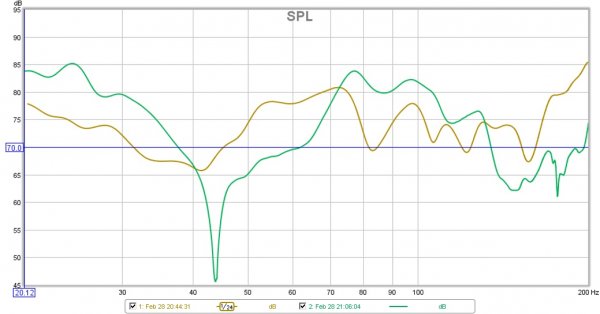... I only rely on Audyssey (Auto) in my own system & from my very humble two subs. But the qualitative results are tenfold compared to without Audyssey (XT flavor only, till I upgrade to XT32). For both Movies (multichannel) and Music (2-channel) listening.
I have Audyssey XT in my Denon AVR in my home theater set-up, but I have never been able to have it sound better "in" (i.e., with correction) than "out". I've redone the set-up on several occasions with similar results, for whatever reason the sound seems to lose dynamics and clarity with the Audyssey XT "in", and the frequency balance doesn't seem much different.


